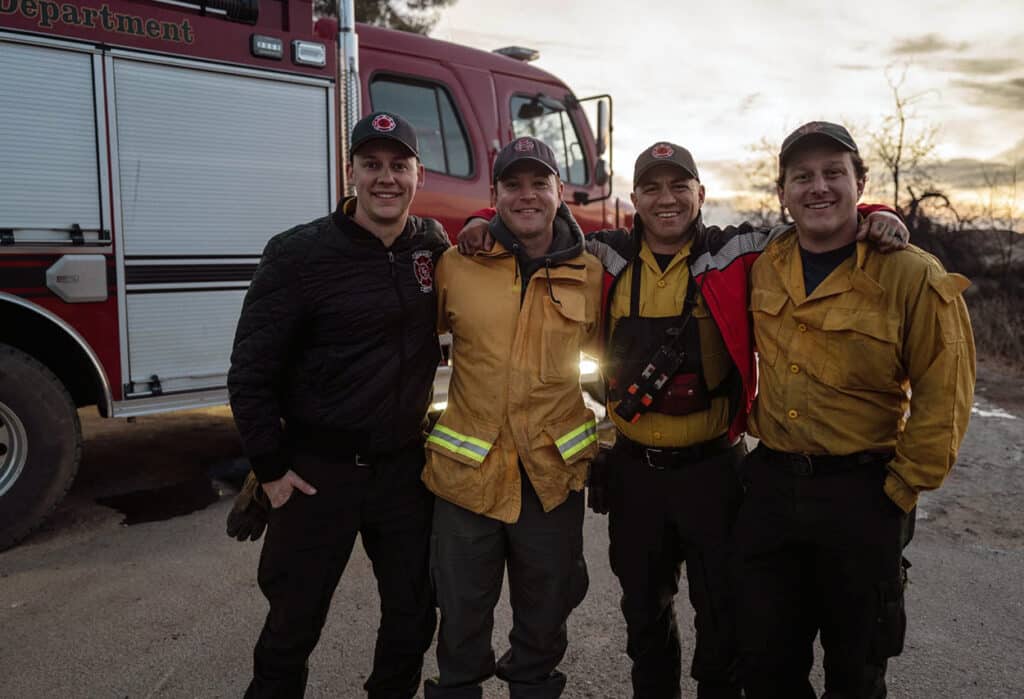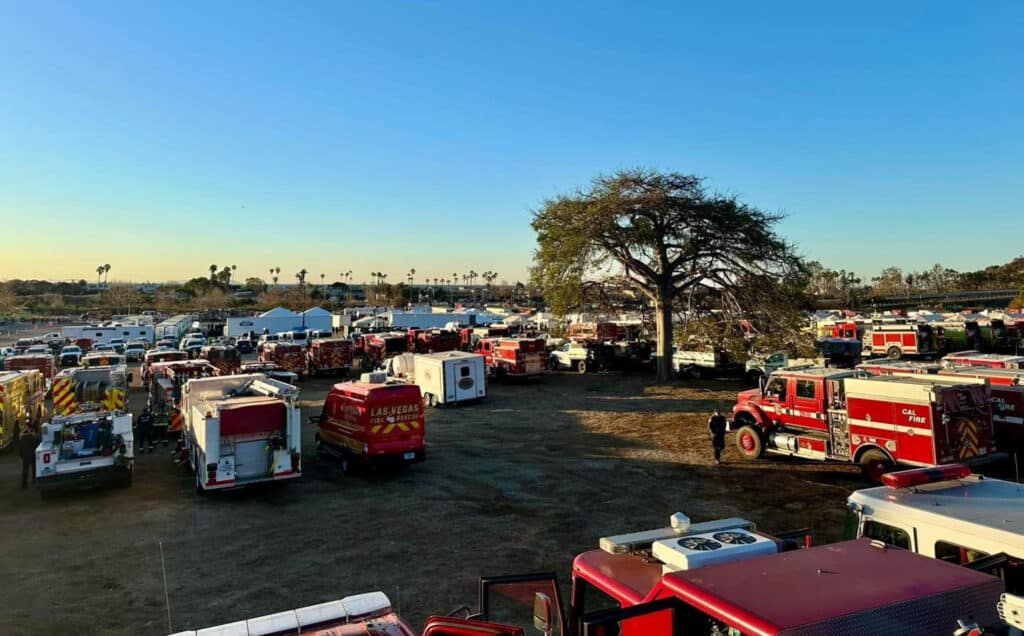Community Police & Fire
Local firefighters are home from L.A. Here’s what they saw
Marty Pattin’s commute to work for a couple weeks in January was pretty dramatic.
Community Sponsor
Community stories are made possible in part by Peninsula Light Co, a proud sponsor of Gig Harbor Now.
Pattin, of Gig Harbor Fire and Medic One, was part of a team of firefighters from the region who deployed to help fight the catastrophic wildfires in Los Angeles. The team’s job was structure protection, mostly in the Mandeville Canyon neighborhood of L.A.
But to get there from their base camp, the team drove through Pacific Palisades. What they saw there will stick with them for a lifetime.
“In Pacific Palisades, driving through it, the fire station is standing (and) one house next to the fire station,” Pattin said last week, not long after he returned from the deployment. “Then four or five blocks on either side, everything is gone. It’s the only building standing.”

Gig Harbor and Key Peninsula firefighters who deployed to Los Angeles in January to battle wildfires. Photo courtesy Key Peninsula Fire Department.
Scenes from an apocalypse
He remembers seeing one neighborhood where a spiral staircase and a few chimneys stuck up above an otherwise flattened cityscape.
Key Peninsula Fire Lt. Adam Morse, another member of the local team, remembers a scene reminiscent of apocalyptic fiction.
“We were coming down a hill one day, driving along, and all of a sudden we had to start weaving through a bunch of abandoned vehicles. Just in the middle of the road,” Morse said. “There were about 50 or 60 cars. Half of them had been burned out. Everybody just got out and ran away from the fire.”
Joining Pattin and Morse on the deployment were Jimmy Dane of Gig Harbor Fire and Kevin Koehl of Key Peninsula Fire. They were part of a strike team that also included personnel from East Pierce Fire, Eastside Fire, Redmond and South Kitsap.
Structure protection
The local firefighters’ job was structure protection. Basically, they were responsible for making sure the fire didn’t spread to homes and neighborhoods that were still standing.
It involved cutting back brush, removing leaves, moving furniture around. Basically getting rid of anything that could catch fire if contacted by the ever-present sparks and burning debris in the air.
“Wherever the fire was encroaching, we had to go through and triage the structures,” Morse said. “Basically, creating a plan of which ones we could save and which ones we couldn’t create a defensible space.”
“Some areas weren’t totally burned out, so you still had danger to homes where neighbors’ homes had burned,” Pattin said. “And the fire was still spreading.”
Long days
They worked 24-hour shifts doing that. With travel time – they slept in less-effected areas and commuted to the scene – they typically ended up being on duty for 28 to 30 hours a day.
The local firefighters were among thousands pulling those shifts during the height of the Los Angeles fires. None of them have ever experienced a response on that scale.
Few firefighters have. Morse deployed to the Carleton Complex fire in Okanogan County in 2014. That was the largest wildfire in Washington history, with some 3,000 firefighters deployed.
“By the second day of my assignment down in L.A., we had more than 5,000 firefighters assigned to it, with more resources incoming,” Morse said. “And that was just the firefighters.”

Fire vehicles parked at the Zuma Beach Base Camp during the recent Los Angeles wildfires. Photo courtesy Key Peninsula Fire Department.
Hundreds of other responders also were on scene, from National Guard soldiers to law enforcement to utility linemen tasked with restoring electricity.
“Just the camps were insane to house that many people,” Pattin said.
Coming back with knowledge
The four local firefighters bring back valuable knowledge should the unthinkable ever happen in the Gig Harbor area.
“They come back with a lot of experience,” Gig Harbor Division Chief Tom Wescott said. “Actually going in and providing the structure protection during an incident. You see how you’re able to go into a neighborhood with a strike team.”
Even having experience in details like communications and logistics could pay off down the road. Though everybody hopes that road never leads here.
“We live in an area that is heavily wooded. It’s what we would call an urban wildland interface,” Morse said. “The big thing is, just educating people and the citizens of our district on what a defensible area round their home is.
“Whether we like it or not, things are getting dryer. Wildfires are getting closer and without that defensible area there not a whole lot well be able to do to save your house.”


